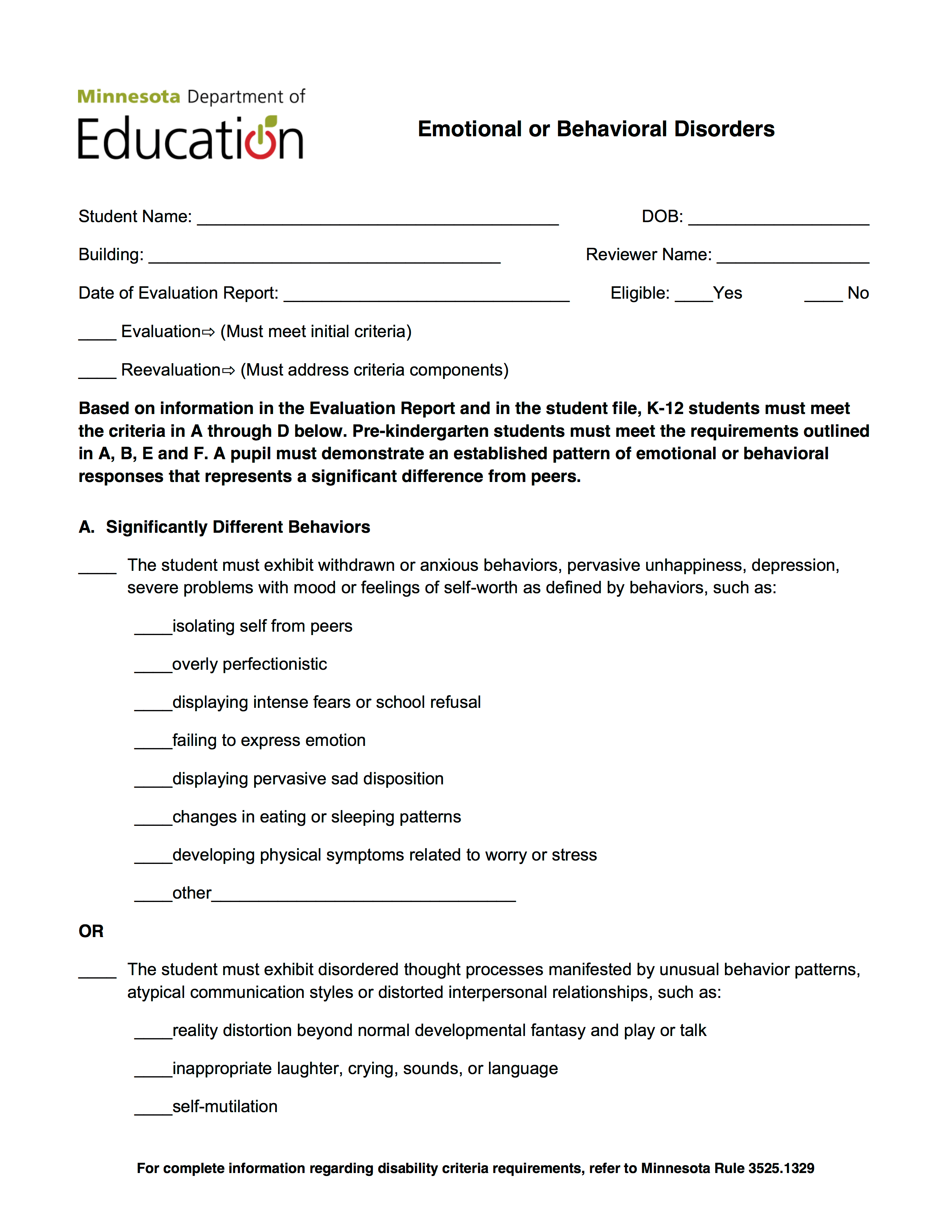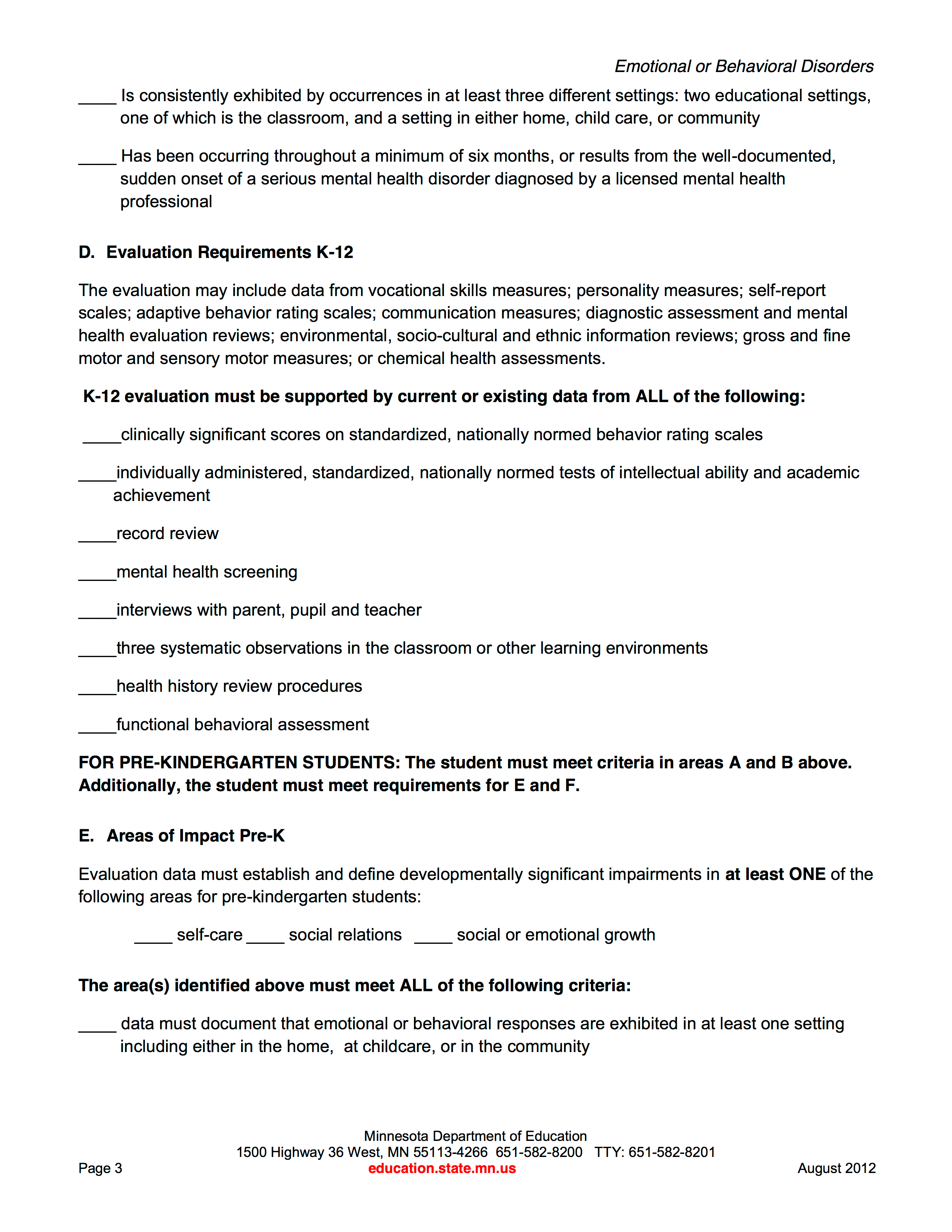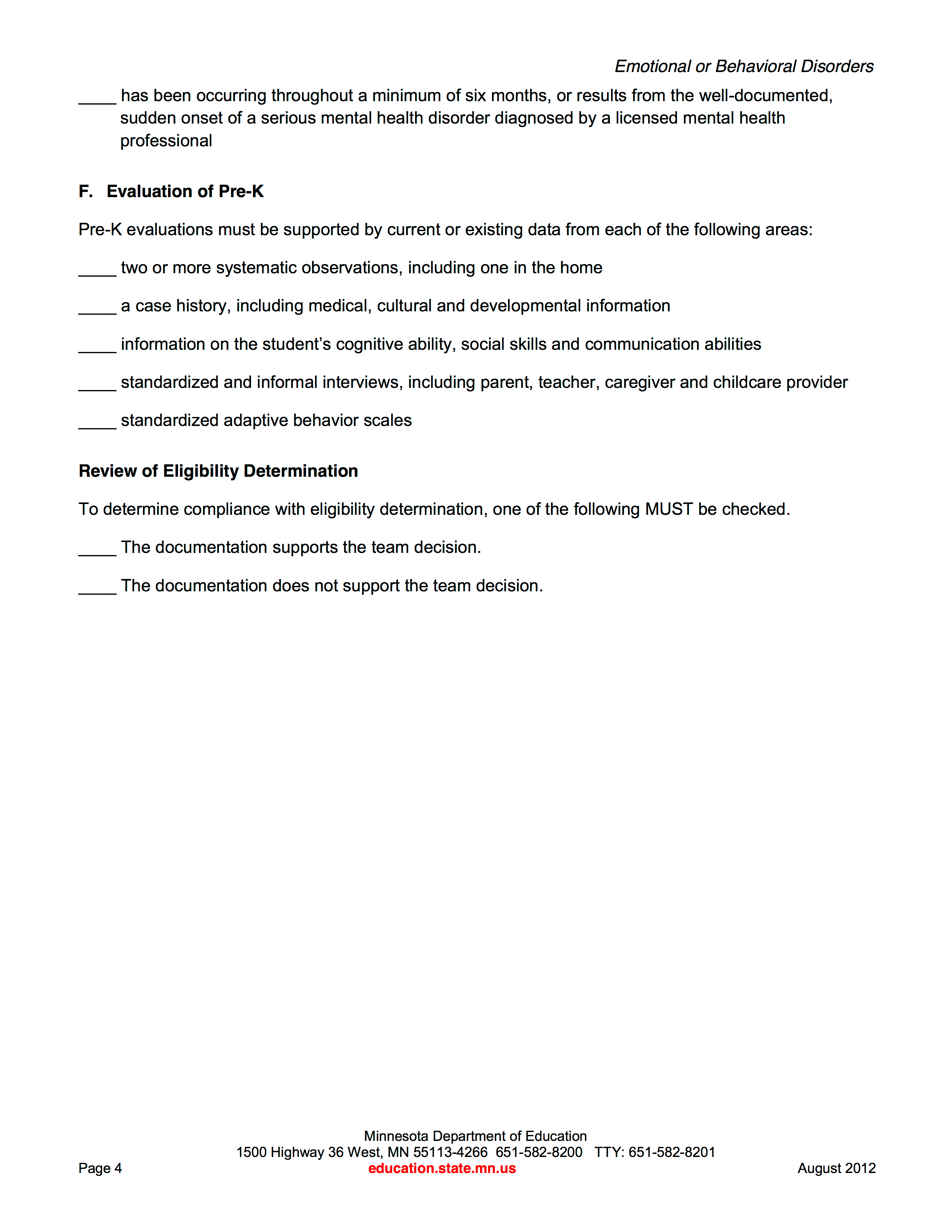
Emotional Behavioral Disorder
Disability Label & Prevalence |
Definition |
General Characteristics |
Identification & Assessment |
Educational Approaches |
Educational Placement Alternatives |
Emotional Less than 1% of General Population |
CCBC – a disability that is characterized by emotional or behavioral responses in school programs so different from appropriate age, cultural, or ethnic norms that the responses adversely affect educational performance, including academic, social, vocational or personal skills; more than a temporary, expected response to stressful events in the environment; constantly exhibited in two different settings, at least one of which is school-related; and unresponsive to direct intervention in general education, or the condition of the child is such that general education interventions would be insufficient. |
Behavior that falls significantly beyond the norms of their cultural and age group on two dimensions: externalizing (aggression, acting out) and internalization (anxiety, social withdrawal). |
Screening Tests: Child Behavior Checklist (CBCL), Behavioral and Emotional Rating Scale (BERS), Systematic Screening for Behavioral Disorders (SSBD); Direct Observation and Measurement of Behavior; Functional Behavioral Assessment. |
Curriculum Goals: academic skills (systematic instruction in reading, writing, and math), and social skills. Research-Based Instructional Practices: school wide positive behavior support; self-management; Fostering Strong Teacher-Student Relationship Focus on Alterable Variables |
General Education Classroom Resource Rooms Separate Classrooms Correctional Facilities Residential Schools Home/Hospital |
Description of 2 evidence-based strategies |
Teacher Praise: using antecedent-based interventions, when implemented with students with EBD, result in an increase in desirable behavior and a decrease in undesirable behavior, teacher praise is the easiest antecedent-based intervention. Praise should be immediate and specific and delivered every time appropriate. (Niesyn, 2009) |
Practitioner Based Article related to this area: Include reference and summary of the article. |
Early Risers is a multi-year prevention program for elementary school children demonstrating early aggressive and disruptive behavior. The intervention model includes two child-focused components and two parent/family components. The Child Skills component is designed to teach skills that enhance children’s emotional and behavioral self-regulation, positive peer relationships, and academic success. The Child School Support component aims to identify areas of difficulty in the classroom and creates individualized plans to address those difficulties during the course of normal school activities. The Parent Skills component is delivered in “family night” group sessions and is intended to promote parents’ abilities to support their children’s healthy development by teaching skills that address positive parent–child relations, effective discipline practices, and parent involvement in school. The Family Support component, which is delivered via home visits, identifies basic needs and health concerns and then implements plans designed to assist families in achieving and maintaining healthy lifestyles. (US Department of Education, 2012) |
MN Eligibility Checklist



